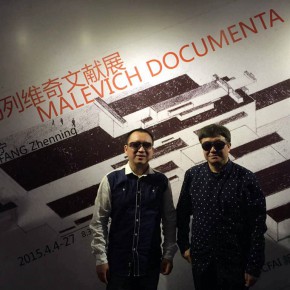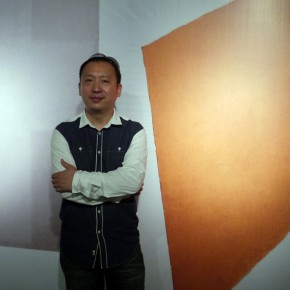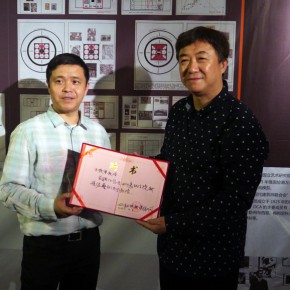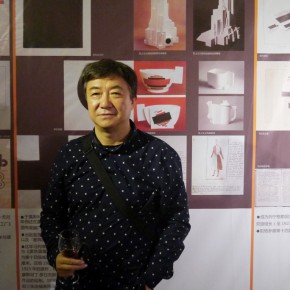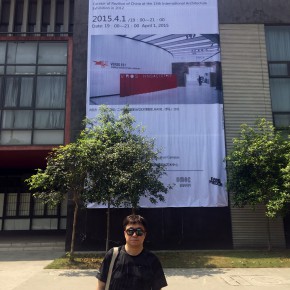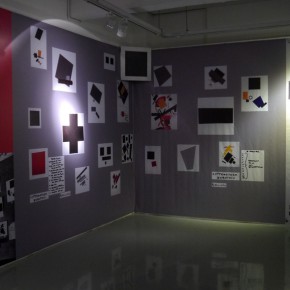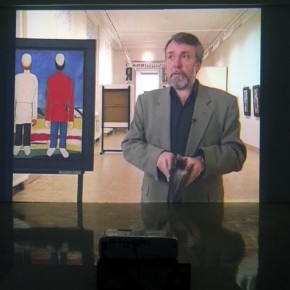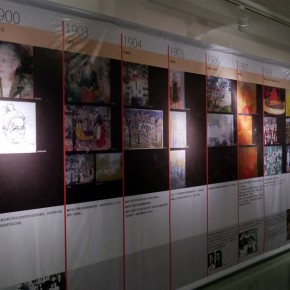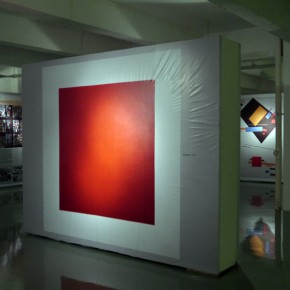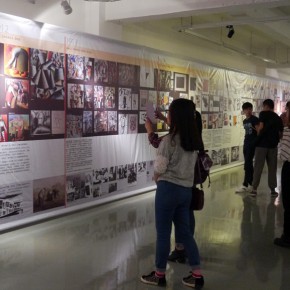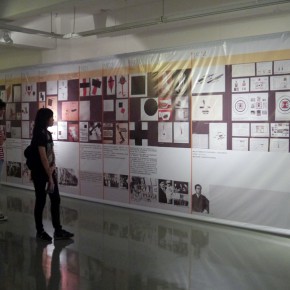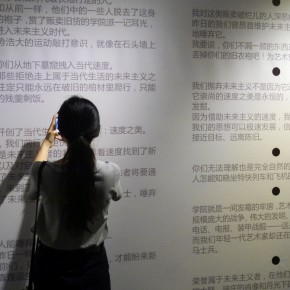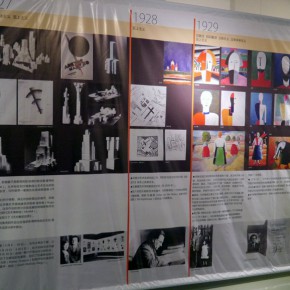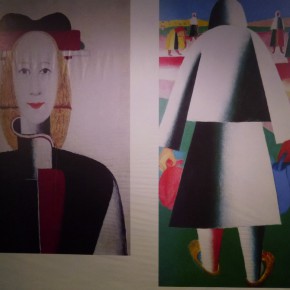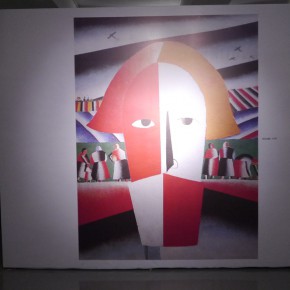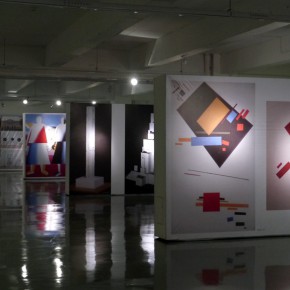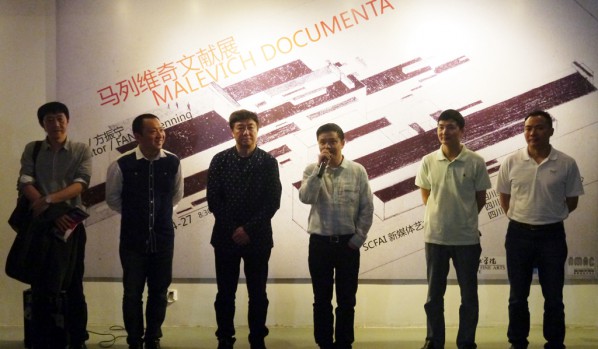
On the afternoon of April 3, 2015, Malevich Documenta successfully opened at the New Media Art Center of Sichuan Fine Arts Institute, to systematically and profoundly comb through the creative life and evolution of the style of work of Kazimir Malevich (1879-1935), Russian supremacist advocator, constructivism advocate, geometric abstract painter of the 20th century.
The exhibition is hosted by Sichuan Fine Arts Institute, jointly organized by the Department of New Media Art of the Sichuan Fine Arts Institute, and New Media Art Center of the Sichuan Fine Arts Institute, curated by the independent curator Fang Zhenning together with Fang Media. The exhibition was presented at BUCEA Graduate School of Architecture Design and Art (ADA) Gallery in Beijing last year, triggered a warm discussion of Malevich’s Suprematism and the key achievement of the exhibition is Malevich’s chronology, which is the most comprehensive chronology by far, bringing together the curator Fang Zhenning’s study on Malevich over 27 years as well as related material.
The person who is familiar with modern art would tell the series of “Square” created by Malevich, although he is a pioneer playing an important role in the development of modern art, Malevich is ignored, in the interview Fang Zhenning analyzed the reason being that the former Soviet Union government didn’t like Malevich’s art, so he was included in the“exiled artists” section, he was ignored in the Soviet Union and also never influenced Russian contemporary art; in addition, because of the long-term confrontation of the cold war, only the history centered on Western art can be examined by Chinese people, while the Soviet Union promoted the “The Wanderers” in China and realism really influenced China, so Chinese people rarely researched or gained knowledge of Malevich. Fang admitted that he didn't know Suprematism at the beginning, until he visited Japan, and he loved the style of Suprematism that was pure artand the spiritual exploration and commenced his 27 year study on Malevich.
The exhibition opened at New Media Art Center of Sichuan Fine Arts Institute, Pang Maokun, Vice President of Sichuan Fine Arts Institute addressed the group stating that Malevich was a key node in the developmental history of modern Western art, while the exhibition was a systematical academic presentation of Malevich, Malevich created his most important work in 1915, the Department of New Media Art presented such an exhibition in 2015, in order to enlighten New Media Art by Malevich’s Suprematism.
The exhibition is clear with a logical structure and the first part is Malevich’s life and chronology of creation, illustrated a large number of photos of Malevich’s works and historical photos, while the chronology material are in 7 languages including Russian, British, French, German, Dutch, Spanish, Japanese. Through this chronology, one can clearly see the evolution of work throughout Malevich’s life, which is also a microcosm of Russian avant-garde art history in the early 20th century; in the 2nd part of the documenta it features the core content of the declaration of Suprematism, which was issued in Moscow by Malevich in 1915, namely “From Cubism and Futurism to Suprematism”, which is the crystallization of Malevich’s thoughts throughout his life and the theoretical foundation for Suprematism as the important art movement in the 20th century and it is an essential bank of literature first translated into Chinese; the 3rd part plays the video “Russian Museum Times - Malevich” about Malevich’s paintings and art, which were taken and produced by the Russian Museum and it plays for the first time in China; the 4th part features installation art, an exhibition corner reproduces the Malevich’s Corner in “The Last Futurism Exhibition 0, 10”, in Petrograd in 1915, the exhibition takes historical photographs as the basis and reproduces more than 20 Suprematism paintings including the “Black Square” which was the first one, it is a timewarp of Supremacism, by which Chinese artists and scholars pay tribute to Malevich on the 100th anniversary.
Sichuan Fine Arts Institute attaches great importance to the documenta, and through a series of lectures, dialogues and workshops, it brings the exhibition into the education of the academy. When Zhang Xiaotao, Director of the Department of New Media Art of the Sichuan Fine Arts Institute was interviewed, he said art chronology study was an invisible thing behind artists, but it played an important role, and was about the methodology, however contemporary art paid more attention to experience, on-site, information, instead of the study of chronology, so he would bring the study on art history into his creation and teaching, only when it strongly “took root”, it was possible to flourish.
The exhibition pays tribute to Malevich, for it is the 100th anniversary of Malevich’s Suprematism declared at the “0, 10” exhibition, while it is the 80th anniversary for the death of Malevich. The exhibition continues to April 27.
Text and photo by Zhang Wenzhi, translated by Chen Peihua and edited by Sue/CAFA ART INFO


